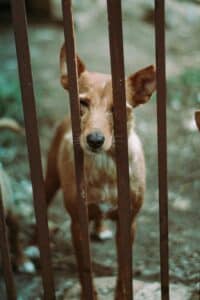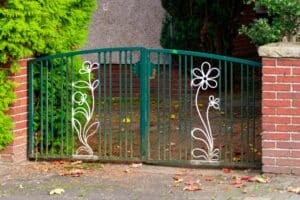In the diverse and dynamic climate of Northern California, iron gates face a unique set of challenges. This region is characterized by a mix of microclimates, varying significantly from cool, foggy conditions along the coast to the warmer and drier inland areas. Such variations can be harsh on outdoor metalwork, particularly iron gates. These gates, while robust and visually striking, are inherently susceptible to the elements. Exposure to moisture and salt air, especially in coastal areas, can lead to rust and corrosion, while temperature fluctuations can affect the metal’s integrity over time.
Weatherproofing these iron structures is not just a recommendation; it’s a necessity for their longevity and aesthetic preservation. Without proper treatment and regular maintenance, the once grand and imposing iron gates can quickly become lackluster and structurally compromised. Weatherproofing involves a series of steps and considerations, from selecting the right materials and protective coatings to regular upkeep, all aimed at shielding these gates from the environmental stressors unique to Northern California. By understanding and addressing these specific climatic challenges, we can significantly prolong the life of iron gates, ensuring they remain as functional and visually appealing as the day they were installed.
Understanding Northern California’s Climate and Its Impact on Iron Gates
Northern California’s Climate: A Varied Landscape
Northern California’s climate is remarkably diverse, ranging from the cool, moist air along the Pacific coastline to the hot, dry conditions of the inland valleys and foothills. Coastal areas often experience a marine layer that brings fog and humidity, particularly during the summer months. In contrast, the inland regions can see temperatures soaring, with a significantly drier atmosphere. This climatic variation can be challenging when it comes to maintaining the integrity of outdoor metal structures, especially iron gates.
Impact of Climate on Iron Gates
- Coastal Humidity and Salt Air: In coastal regions, the high humidity and salt-laden air can be particularly detrimental to iron gates. Salt air accelerates the oxidation process, leading to rust formation. This rust not only undermines the structural integrity of the gate but also mars its aesthetic appeal. Regular exposure to fog and mist can keep the iron surface perpetually damp, exacerbating rusting and corrosion.
- Temperature Fluctuations: Inland areas experience greater temperature variations, ranging from hot daytime temperatures to cooler nights. These fluctuations can cause the metal to expand and contract, potentially leading to stress fractures over time. In extreme cases, the welding joints can weaken, compromising the gate’s structural stability.
- Rainfall and Moisture: Northern California’s wet seasons bring significant rainfall. Constant exposure to water can expedite rusting, especially in poorly protected or damaged areas of the iron gate. This issue is particularly pronounced in areas where water can pool or collect on the gate, such as in crevices or decorative elements.
Material Selection for Durability
Choosing the Right Iron
- Wrought Iron: Traditionally used for gate-making, wrought iron is prized for its malleability and classic appearance. It’s an ideal choice for custom designs and intricate patterns. However, wrought iron needs regular maintenance and protective coatings to withstand Northern California’s climate.
- Galvanized Iron: This type of iron is coated with a protective layer of zinc, which provides a barrier against rust and corrosion. Galvanized iron is more resistant to the effects of moisture and is a good choice for areas with higher humidity or rainfall.
- Stainless Steel: While not a traditional iron, stainless steel is an alternative that offers superior resistance to rust and corrosion, making it a viable option for gates, especially in coastal areas.
Protective Coatings for Enhanced Protection
- Powder Coating: This dry powder is electrostatically applied and then cured under heat, creating a hard finish that is tougher than conventional paint. Powder coating provides an effective barrier against moisture and environmental elements, thereby reducing the risk of rust and corrosion.
- Zinc Primers: A zinc-based primer can be applied to iron gates as an initial protective layer. Zinc acts as a sacrificial metal, corroding in place of the iron, thereby significantly extending the life of the gate.
- Epoxy Coatings: Known for their durability, epoxy coatings form a thick, protective layer on the surface of the metal. They are highly resistant to moisture and can be an excellent choice for gates exposed to harsher elements.
- Clear Sealants: For those who prefer the natural look of iron, clear sealants can be applied. These sealants provide a protective layer without altering the gate’s appearance, shielding the metal from moisture and environmental factors.
Effective Weatherproofing Techniques
Step-by-Step Guide on Weatherproofing Iron Gates
- Initial Assessment: Begin by thoroughly inspecting the iron gate for any existing damage, rust, or weak spots. This assessment helps in determining the extent of weatherproofing needed.
- Surface Preparation:
- Cleaning: Remove any dirt, debris, or cobwebs from the gate using a brush or a pressure washer. This step is crucial for ensuring that the protective coatings adhere properly to the iron.
- Sanding: Once the gate is clean, sand the surface, especially areas with rust or old paint. Sanding down to the bare metal is ideal for the best results. Use a finer grit sandpaper for finishing to create a smooth surface.
- Applying Protective Coatings and Sealants:
- Primer Application: Apply a rust-inhibiting primer, preferably a zinc-based one, to the entire gate. This layer acts as a protective barrier against moisture and corrosion.
- Painting: After the primer dries, apply a layer of weatherproof paint. For the best protection, choose a paint formulated for outdoor metal surfaces. Apply in thin, even coats to avoid drips and uneven coverage.
- Sealant Application: Once the paint is dry, apply a clear sealant for an extra layer of protection. This step is particularly important for gates in highly humid or coastal areas.
- Ensuring Even Application and Optimal Drying Conditions:
- Even Application: Use a spray gun or a brush for an even application of primer, paint, and sealant. Ensure that all nooks and crannies are covered.
- Drying Conditions: Weatherproofing should ideally be done in dry, mild weather. Avoid painting in direct sunlight, high humidity, or windy conditions, as these can affect the drying process and the finish quality.
Regular Maintenance to Combat Weather Effects
Routine Inspection and Cleaning Practices
- Regular Inspections: Conduct quarterly inspections of the gate for any signs of wear, rust, or damage. Pay special attention to hinges, joints, and any areas that are prone to water accumulation.
- Cleaning: Regularly clean the gate with mild soap and water to prevent dirt accumulation. This not only keeps the gate looking good but also prevents the buildup of materials that can trap moisture against the metal.
Identifying and Addressing Early Signs of Weather Damage
- Rust Spotting: At the first sign of rust, sand the area down to the metal and apply a rust-inhibiting primer and repaint the affected area.
- Chipping or Peeling Paint: If you notice any chipping or peeling paint, address it immediately. This exposes the metal to elements and can lead to rust. Sand the area and apply fresh paint.
Seasonal Maintenance Tips
- Before Wet Seasons: Ensure that drainage paths are clear of debris to prevent water from pooling around the gate. Apply a fresh coat of sealant if necessary.
- During Dry Seasons: Inspect for sun damage or fading, and touch up paint as needed. Lubricate moving parts like hinges and locks to prevent them from seizing up.
By following these weatherproofing and maintenance steps, you can significantly extend the life of your iron gate and keep it looking as majestic as the day it was installed, despite the challenging weather conditions of Northern California.
Advanced Protection Strategies
Innovative Treatments and Technologies for Enhanced Weather Resistance
- Cathodic Protection: This method involves applying a small electric current to the iron gate, making it the cathode of an electrochemical cell. This process significantly slows down rusting and corrosion, especially useful in high-salt environments like coastal areas.
- Nano-Coatings: Nano-coatings are a cutting-edge solution that provides a microscopic protective layer over the iron. These coatings are highly resistant to corrosion, UV radiation, and physical abrasion. They also offer a self-cleaning effect, as their hydrophobic properties repel water and dirt.
The Role of Design Elements in Reducing Weather-Related Damage
- Water Runoff Designs: Integrating design elements that encourage water runoff can significantly reduce moisture accumulation, a primary cause of rust. Sloped tops, strategic placement of decorative elements, and proper spacing can ensure water does not pool on the gate.
- Wind-Resistant Structures: In areas with high winds, designing gates with gaps or less surface area can reduce wind resistance. This design choice lowers the risk of physical damage from strong winds and helps in maintaining structural integrity over time.
Professional Installation and Weatherproofing Services
Benefits of Professional Installation for Optimal Weather Resistance
- Expertise in Material Selection: Professionals can recommend the best materials and protective coatings suitable for the specific climate of Northern California.
- Quality Installation: Proper installation ensures that the gate is well-aligned, with no gaps or misalignments that could lead to future damage.
- Advanced Weatherproofing Techniques: Professionals have access to advanced weatherproofing methods like cathodic protection and nano-coatings, which might not be readily available to the general public.
Recommended Services and Products for Northern California Residents
- Local Weatherproofing Specialists: Seeking services from local experts who understand the regional climate challenges is beneficial.
- High-Quality Protective Coatings: Professionals can provide access to top-tier protective coatings and paints specifically designed for iron gates in challenging climates.
Conclusion
In conclusion, the proper weatherproofing of iron gates in Northern California is not just a matter of aesthetic preservation but also a practical need for ensuring longevity and functionality. The region’s unique climate poses specific challenges that require specialized attention. From selecting the right materials and coatings to incorporating advanced protection strategies, each step plays a crucial role in safeguarding these gates. Regular maintenance and professional consultations are key to addressing weather-related wear and tear effectively. By prioritizing these aspects, gate owners can ensure that their iron gates withstand the test of time and continue to enhance the beauty and security of their properties.



